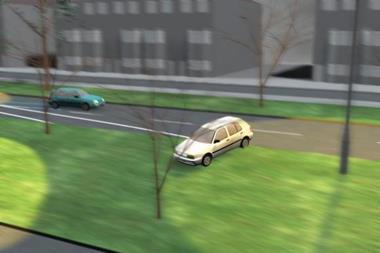Last year saw the publication of a document from the Health and Safety Executive and the Department of Transport, which set out the responsibilities of companies under health and safety law in addition to the duties of an employer contained in the Road Traffic Act and Road Vehicle (Construction and Use) Regulations. The Health and Safety at Work Act (1974) requires employers to ensure, as far as is reasonable practicable, the health and safety of all employees while at work, and responsibility further extends to ensuring that others are not put at risk by work-related driving activities.
Under the Management of Health and Safety at Work Regulations (1999), there is a requirement for management to manage health and safety effectively.
Additionally, they are also required to carry out an assessment of the risks to health and safety of employees while they are at work and to other people who may be affected by their work activities. The regulations require periodic review of the risk assessment.
Many insurers have actively been surveying fleet operations for some time now and, almost without exception, have been finding that driving at work has not been integrated into companies' core health and safety arrangements. Policy, responsibility, organisation, systems and monitoring have been largely ignored in the belief that vehicles have not been included in health and safety law.
Meanwhile, the EU has issued a directive concerning the periodic training of drivers of certain large goods vehicles, coaches and minibuses. This requires more stringent initial driver qualifications and compulsory refresher training of at least 35 hours in every five years.
The training of drivers in industry began some 12 years ago, when companies in the petrochemical and pharmaceutical industries extended their core health and safety practices to the training of drivers, delivered in the system-based style of police training. The success of this initiative was evidenced by a dramatic reduction in the frequency of accidents and the cost of claims.
This did not go unnoticed, and little time passed before third parties, including motor manufacturers, leasing companies and insurers began to realise that the gains to be achieved would also extend to their businesses.
However, despite continuing evidence of success, the number of companies which have voluntarily invested in programmes of training remains a small percentage of the whole.
Road traffic fatalities have steadily diminished, the benefit stemming from huge strides in the design of vehicles, improved safety features of road networks and quicker responses from the medical services. As a result many more have survived serious accidents. However, the numbers flatter the overall picture.
Government research indicates that as many as one third of all road traffic accidents involve somebody who is at work at the time, and that work-related driving accidents account for over 20 fatalities and 250 serious injuries every week. Despite the documented evidence of success from training programmes - typically a 50% reduction in accident frequency and cost, and savings in the whole-life running cost of vehicles amounting to thousands of pounds per vehicle - companies have resisted programmes of fleet risk management, preferring to believe that 'we are all good drivers'. This is despite the fact that insurance statistics show that, on average, two thirds of all company cars crash each year, and almost all trucks collide with something every year.
Legislation which would firmly place responsibility on the shoulders of companies to ensure the safety of drivers at work has long been discussed.
But adequate legislation already exists. Further, the fleet risk management industry has matured rapidly and, while hands-on driver training still dominates the scene, an array of product solutions has evolved, with online risk assessments, fleet survey, classroom training, driver handbooks, driving policy statements and, more recently, the potential to introduce 'simulator' technology, similar to that found in the airline industry.
The insurance industry and particularly the broking market, is now well placed to provide appropriate advice and guidance, often referring clients to industry experts who can effectively enable them to meet their responsibilities and, more importantly, indemnify themselves against prosecution. At the same time, client profitability will be improved, and both broker and insurer will benefit from long-term relationships with responsible operators.
The evidence is irrefutable: training works. While managing the driving at work risk has been low priority, this is changing. After all, driving at work is probably the most dangerous task we ever undertake.
EUROPE'S NEW TRAINING REGIME
The EU directive on the initial qualification and periodic training of drivers of certain road vehicles for the carriage of goods or passengers entered into force on 10 September 2003. The European Traffic Police Network (the TISPOL organisation) summarises the provisions on its website, stating that 'this important milestone in the harmonisation of social aspects in road transport policy should lead to enhanced safety on European roads'.In addition to improving road safety in general, the directive also aims to reduce environmental damage, with a special focus on reduction of fuel consumption. Member states can choose to introduce initial qualification in two ways:
- theory and practical exams with a total length of 6 hours
- fixed length of training (280 hours) concluded by a knowledge test.
As well as these two options, member states may introduce vocational training courses with a length of a minimum six months to a maximum of three years. Such a training scheme allows future drivers to alternate theory and practical training with training on the job in a company. Finally, member states can introduce accelerated initial qualification for candidate drivers who are older, or who are choosing to drive vehicles of smaller weights and dimensions (140 hours).
In addition to the initial qualification, the proposal for a directive establishes the principle of periodic training. This will be for 35 hours every five years, about the equivalent of one day's training a year. These hours must be given in blocks of at least seven hours.
www.tispol.org/content/Newsroom/lang/English/86.phtml.



















